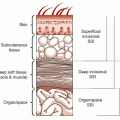Catheter material |
|
Polypropylene vs. Teflon |
|
Silicone elastomer vs. polyurethane |
|
Teflon vs. polyether urethane |
|
Teflon vs. steel needles |
Catheter size |
|
Large bore vs. smaller bore |
|
8 vs. 2 inches Teflon |
Insertion in emergency room vs. inpatient units |
Disinfection of skin with antiseptic before catheter insertion |
Experience and skill of the person inserting the catheter |
|
House officers, nurses vs. hospital IV Team |
|
House officers, nurses vs. decentralized unit IV nurse educator |
Increasing the duration of catheter placement in site |
Subsequent catheters beyond the first infusate |
|
Low-pH solutions (e.g., dextrose-containing) |
|
Potassium chloride |
|
Hypertonic glucose, amino acids, lipid for parenteral nutrition |
Antibiotics (especially β-lactams, vancomycin, metronidazole) |
High rate of flow of IV fluid (>90 mL/hour) |
Disinfection of insertion site before catheter insertion |
|
None vs. chlorhexidine/alcohol |
Frequent IV Dressing Changes |
|
Daily vs. every 48 hours |
Catheter-related infection |
Host factors |
“Poor-quality” peripheral veins |
Insertion site |
|
Upper arm, wrist vs. hand |
Age |
|
Children: older vs. younger |
|
Adults: younger vs. older |
Sex |
|
Female vs. male |
Race |
|
White vs. African American |
Underlying medical disease |
|
Individual biologic vulnerability |
Factors shown not to increase risk in well-controlled, prospective, randomized trials include catheters made of polyethylene vs. siliconized elastomer or of Teflon vs. siliconized elastomer; type of antiseptic solutions used for cutaneous disinfection; use of topical antimicrobial ointment or spray on catheter insertion sites; type of dressing (e.g., gauze vs. transparent polyurethane dressing); dressing change every 48 hour vs. not at all; administration of infusate by gravity flow vs. pump; administration of IV antibiotics by slow infusion vs. “IV push” over 2 minutes; maintenance of heparin locks with saline vs. heparinized saline; and frequency of routine change of IV delivery system. |
aDenotes significantly greater risk of phlebitis; factors found to be significant predictors of risk in a prospective study of 1,054 peripheral IV catheters at the University of Wisconsin Hospital and Clinics. |
IV, intravenous. |
From Maki DG, Ringer M. Risk factors for infusion-related phlebitis with small peripheral venous catheters. A randomized controlled study. Ann Intern Med. 1991;114:845-854, with permission. |







